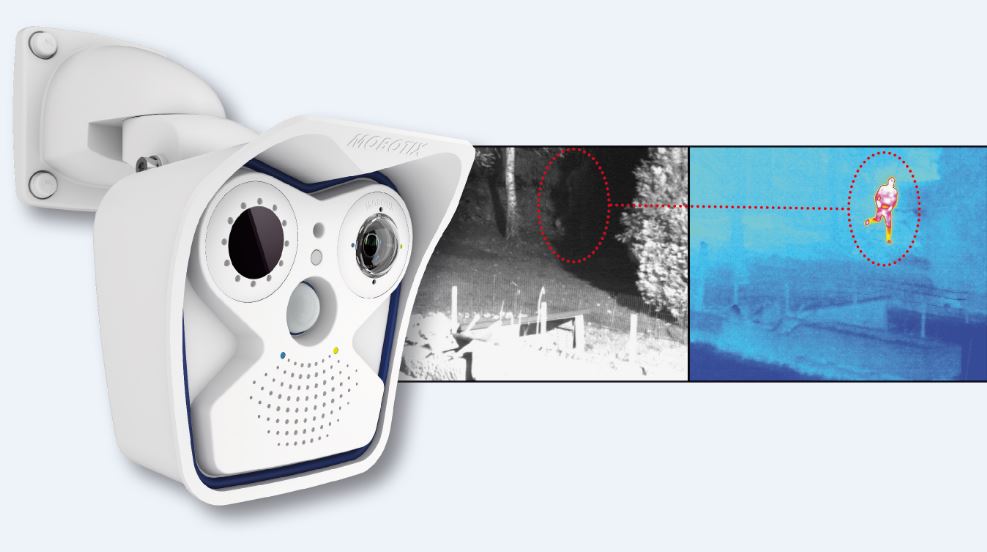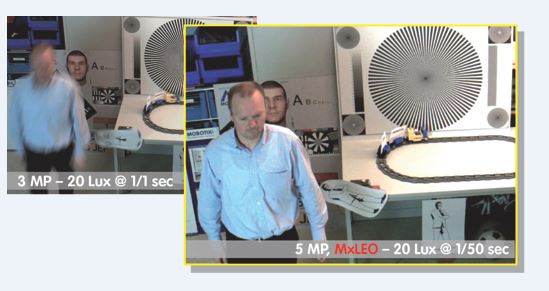Read more about Mobotix here
In part one of this roundtable discussion Klaus Gessman, who became Mobotix CFO in 2013 and CEO in February 2014, outlined the merits of decentralising their VMS to individual cameras as well as the risks of adopting an open-platform system.
In this second instalment Gessman tells the audience of journalists why the Kaiserslautern-based company is now accommodating ONVIF and the H.264 standard in its latest VMS with plans afoot to do the same in its cameras.
However, he warns, the industry’s de facto video compression format’s limitations will be increasingly exposed by burgeoning technical demands.
Question: You demoed a multi-display, multi-function product for us. The support for ONVIF hadn’t been previously considered [by Mobotix] because the H.264 is an inferior technology. That is a major change – what is the rationale behind that?
Klaus Gessman: It is a complete strategy change for Mobotix. We used to say that we didn’t care about H.264, ONVIF and so on – we’ll go our own way with Mobotix, including with our outstanding video codec.
But then you have to convince customers who have already invested in a huge way in – let’s say Avigilon Vision or analogue systems – to get rid of those and use only Mobotix systems. Or the other way round: a new hotel is built, then it’s easier for us, because we can say “please take Mobotix because of our centralised concept” – and so on.
But we have to take care of the installed base and we can’t always convince customers by saying “you’ve invested probably €200,000 or so in your video security solution and you now have to get rid of that and install Mobotix completely new”.
That’s why we’re going for a new generation of video management systems. And the outstanding thing there is gesture control – and that is the feedback from our NPCs [national partner conferences] and IPCs [international partner conferences] and so on.
That will be a game-changer]. We’ll bring it out into the market hopefully very quickly.
So we decided to make it [the VMS] from scratch and have the H.264 and ONVIF functionality within.
Question: Just to clarify, the cameras themselves are not going to support H.264? It’s the display, the control element…
KG: That’s true for the time being, but we are working on [incorporating] H.264 in all our cameras as well.
But you need to understand that the MPEG Group, which developed the H.264 video codec, clearly stated that H.264 was not developed for security and surveillance systems. They said it was developed for Steven Spielberg – for the entertainment industry.
What is the difference between H.264 and our own audio video coding? H.264 has high resolution pictures, but within them they have some not-so-precise pictures because they don’t need these brilliant frames, second by second.
To bring the whole Steven Spielberg HD format into one DVD they said “let’s take every fourth picture as a brilliant, perfect picture and the other pictures are not so important so we can make changes to them.
The security industry is completely different. It won’t help us if one of those lower quality images is actually the moment when someone steals something.
At Mobotix we have a slightly lower frame rate than H.264 but each picture is brilliant quality – five megapixels – and you can dive into the detail, zoom in and find out who is in the picture.
But, nevertheless, certain countries have laws saying you have to use H.264 in surveillance projects. So we’ll implement H.264 to win those projects, but we’re sure that if you change to an MxPEG [Mobotix’s proprietary format), you won’t want H.264 again.
So at first we’ll have a video management system, the ability to get the H.264 and ONVIF standard, so other cameras can be integrated with our video management solution.
Then the next step, we would take care of H.264 on all cameras as well. These are fundamental changes for Mobotix.
Journalist comment: We’ve had some great technologies in the past that failed because they weren’t accepted and some secondary technology that had minor acceptance. For all H.264’s problems it has been widely accepted across the industry. The question really is, does Mobotix isolate itself from the greater industry? We have a strong tradition of people not liking one-brand systems… Nobody wants to go back 20 years ago, if you look at what happened to one-brand systems, especially in the UK. So you can have the best system in the world, but the minute I hack into your proprietary system, that sets off alarm bells. Is that also a factor in your integration with H.264?
KG: I would say yes, because as I said, I want to be open in the market. But I want to take the opportunity to make a direct comparison tell any customer you can get this quality of picture but it’s up to you.
I strongly believe the customer will say: “I have H.264 and [9:07] abilities but I will take MxPEG because it’s a better format”.
But for the time being yes, we want H.264 and ONVIF integration capabilities.
Comment from journalist: Potentially we could go to HEVC, which is the next step above in terms of higher quality video encoding ce we reach very high resolution displays. H.264 suddenly then becomes a problem… HEVC allows much better compression and across the network transmission so it interesting, hardware based encoders are going to be limited in the CCTV industry in my opinion.
Not five years down the line, but maybe eight to 10, when people have to change again because they want ultra-HD CCTV, particularly for applications where you have lots of people in an area and you are using analytics to track behaviour with analytics. It’s absolutely fascinating what you can do once you have a high enough source…
Question: Are there any intelligence add-ons to what you are doing?
KG: I think so. With the new CPU and new platform, new board and so on, we can think about it, and we have enough power within all the decentralised cameras and so on to think about all those things, yes. But there is nothing I can or would say right now.
First of all, for next year [2015], we’ll focus on video management software – the Mx multiviewer – the hardware improvement, then with the new hardware we can think about the intelligence of the system as well the camera.
Question: A previous EPC talked about the data output from cameras – so things like analytics, heat maps… what the camera can provide to the operator beyond video.
KG: That is an add-on I would love to see on the decentralised systems. With MX-Analytics we had analytics in the past.
We have recently successfully fought a patent battle against a company called e-Watch in the US. They took us to court over patent infringements.
Our intellectual property rights team is brilliant and from the beginning we always check the patent situation in all countries we’re active in. Two years ago, e-Watch told us “we have a patent for this and we need to come to an agreement. If you pay us $2.7 million then everything is settled.”
We had a look into it and it was clear that this was something that we had shown some years before, before they got their patent. We had shown it at the Seebit Fair in Hannover, in 2001 I think.
Then we used a new tool in the US called IPR. You can ask the US patent office and to have a look into a patent: “we strongly believe that this patent shouldn’t be a patent because we had shown this some years before in Germany at a trade fair.”
So some weeks ago the US patent office had deleted these patents and said “yes, you are right, Mobotix, you have shown that this already was more or less open knowledge, so it couldn’t be patents”.
We have another claim with a company called ComChem. We have checked this as well and are asking the US patent office to delete these patients.
Why do we do that? We have to spend a lot of money – for example €1.5m on that case, which compared to $2.7 million you can say “okay, that is almost similar”. Yes it is, we want to say with these two lawsuits “let’s invest this money now, because it will help us save money later on.”
You’ve seen this with Apple and Samsung. We want to say very clearly: “If you want to come to us, then at the end you might end up with nothing, because you lose your patents – and that is the strong image we want to send out.
So far, we have been successful.
Free Download: The Video Surveillance Report 2023
Discover the latest developments in the rapidly-evolving video surveillance sector by downloading the 2023 Video Surveillance Report. Over 500 responses to our survey, which come from integrators to consultants and heads of security, inform our analysis of the latest trends including AI, the state of the video surveillance market, uptake of the cloud, and the wider economic and geopolitical events impacting the sector!
Download for FREE to discover top industry insight around the latest innovations in video surveillance systems.

